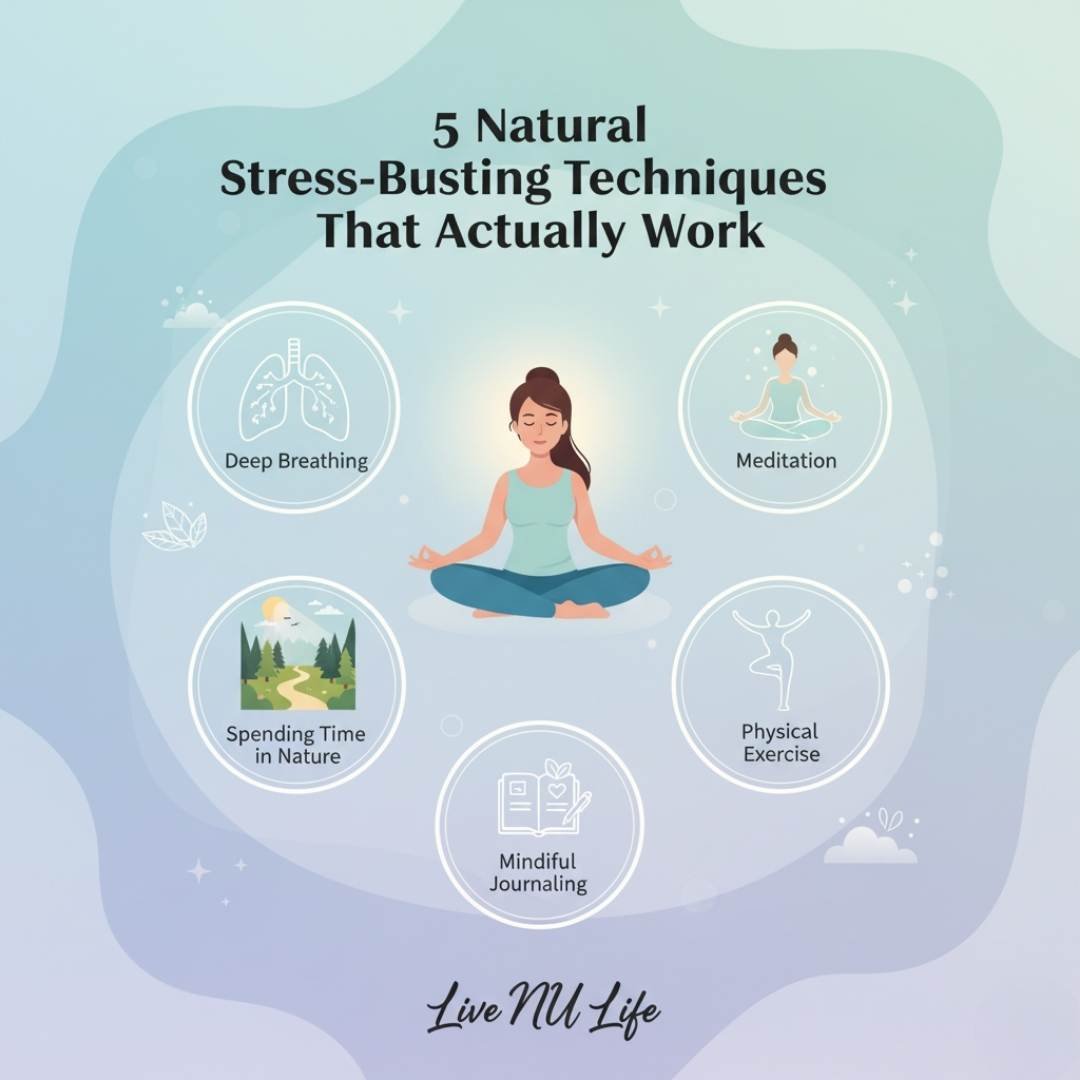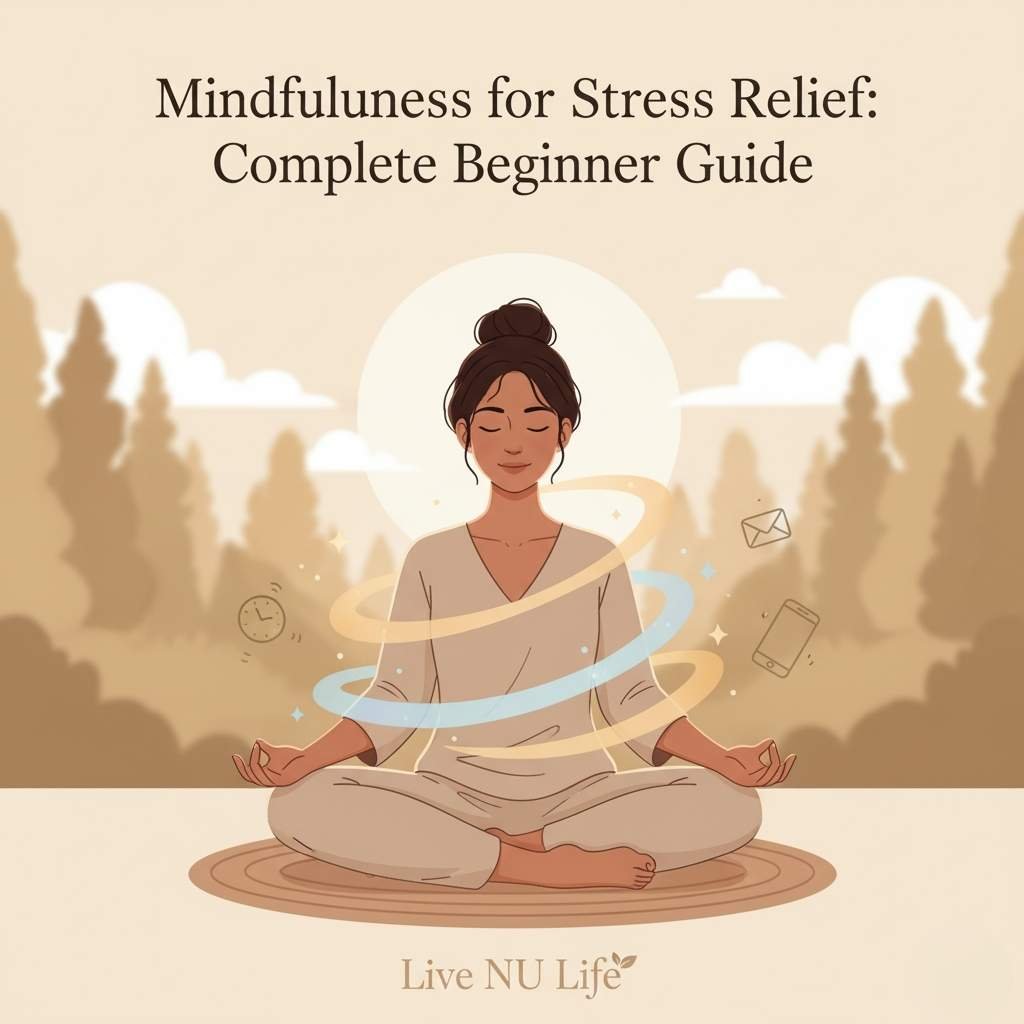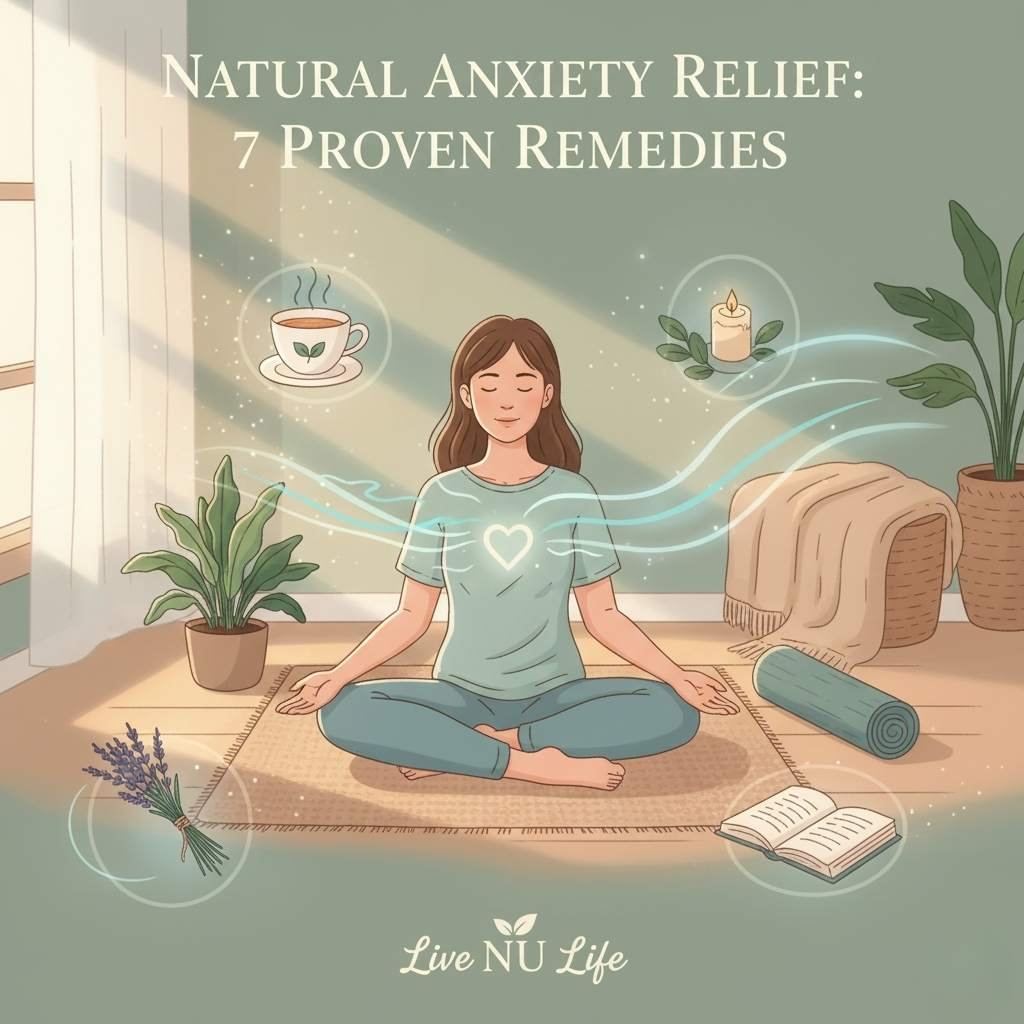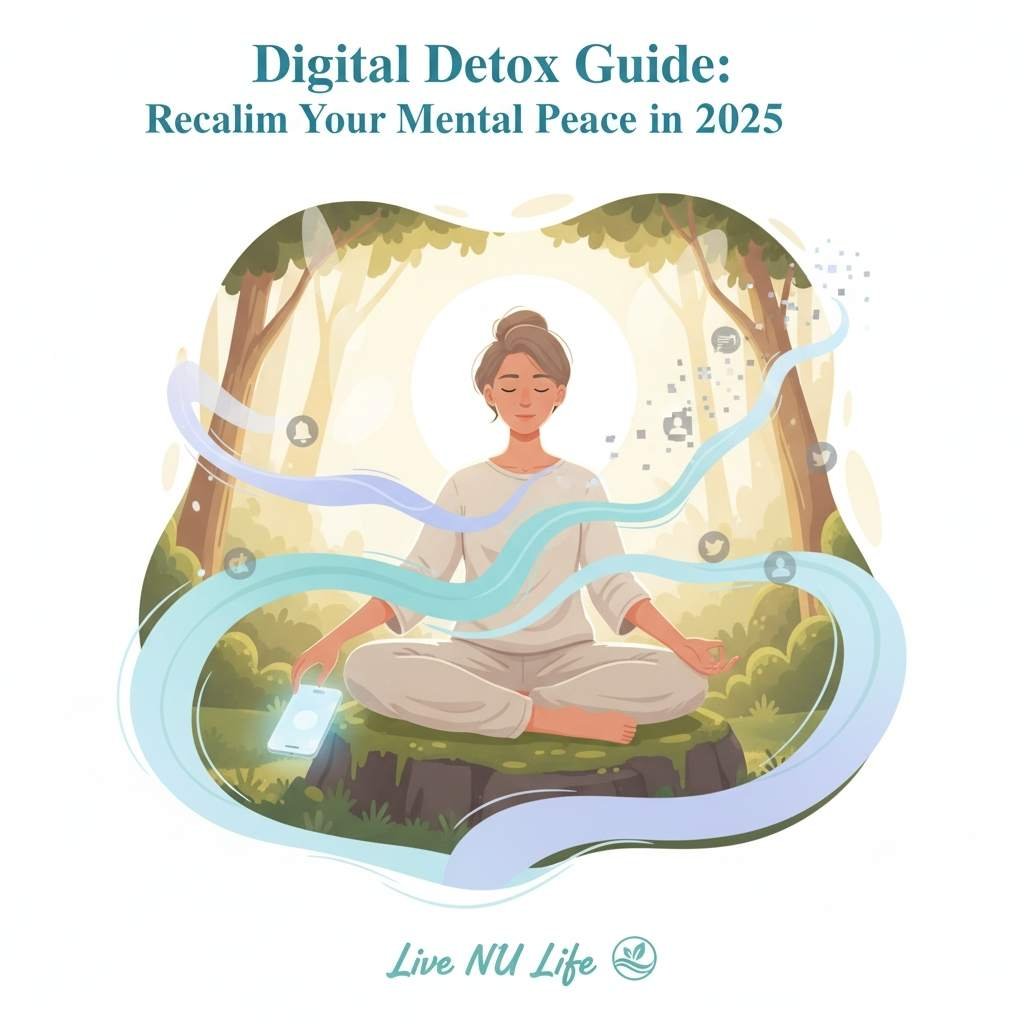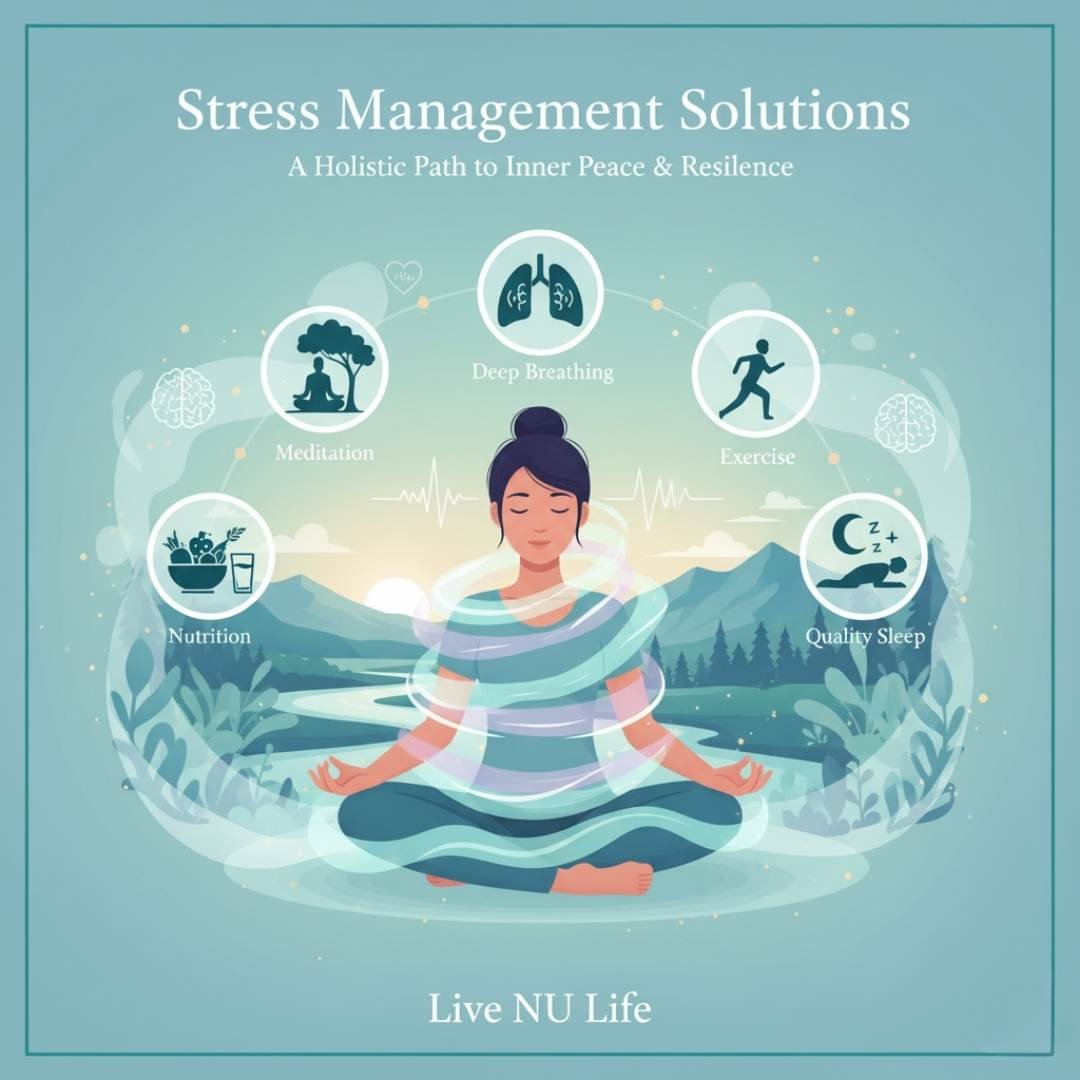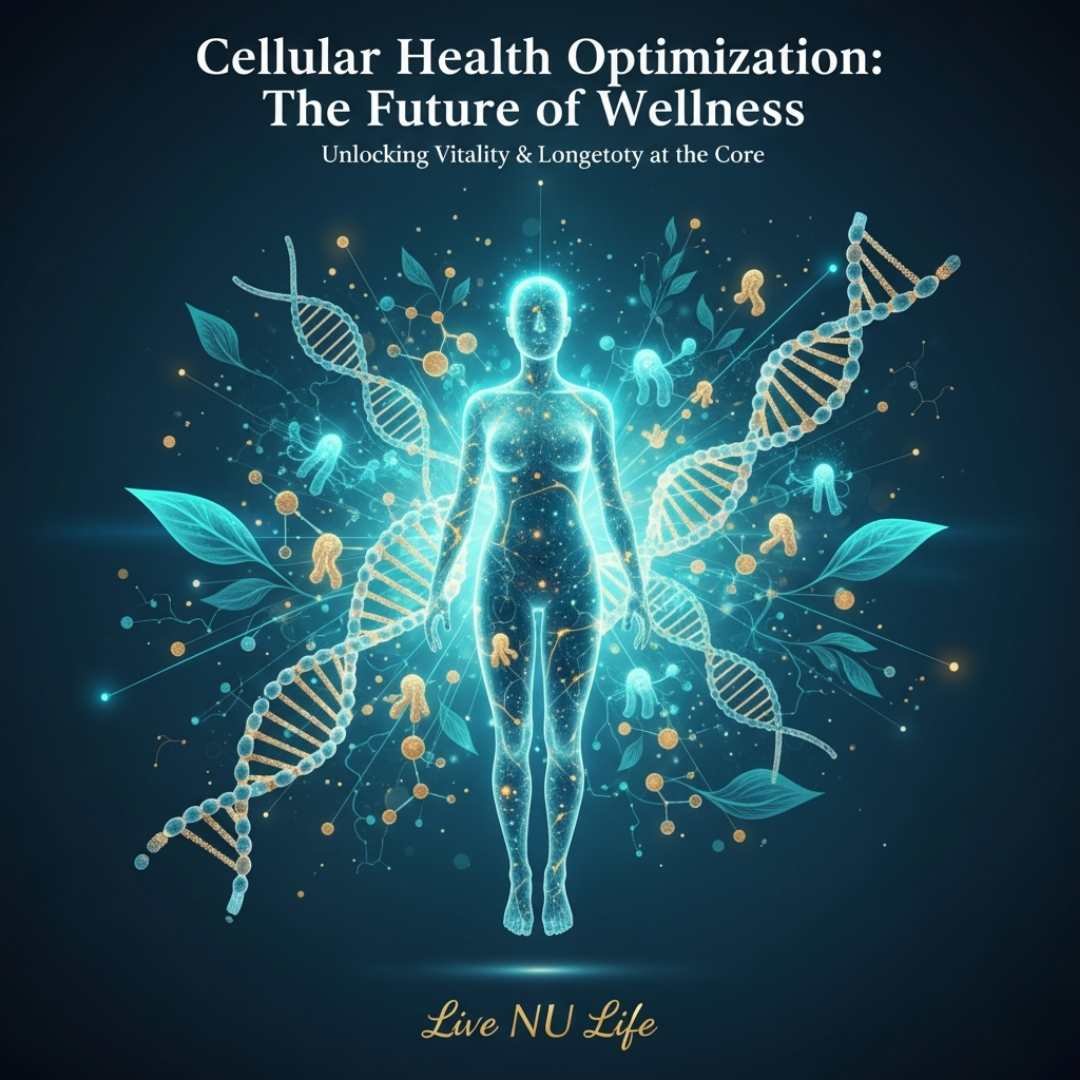Stress is everywhere. It hits you in the morning, at work, even at home. You feel tight like a rope pulled hard. So, you need easy ways to let go of that tension. Natural stress-busting techniques work better than pills sometimes. Start small. Breathe deep, like filling your balloon slowly. Then, move your body gently—stretch like a cat waking up.
These little acts calm the busy mind without any fancy stuff. Imagine your worries as balls you toss away, one by one. Nature helps too—step outside, feel the sun or wind on your face. Don’t wait for stress to pile high. Use these simple tricks now, every day. This way, stress won’t control your life. You will learn what exactly to do next to bring peace and relax hard. Keep reading to discover real natural methods you can try today.
Table of Contents
ToggleUnderstanding Stress: What’s Really Happening Inside Your Body
Stress is a busy signal inside your body. Sometimes you feel worry, or pressure, or your heart beat fast (like when you hear loud thunder). This not just in the head. Your body do work every time stress come. Listen to it—body has a story to tell.
What Is Stress—Real Action Inside
Body Alarm Switch On
- Heart pump faster. Like running without moving legs.
- Muscles become tight (feel shoulder hard as stone). Sometimes you clench jaw (notice next time).
- Breathing get fast and shallow. Catch breath. (Try deep breath to calm down—helpful trick).
Hormones Release
- Body send out cortisol and adrenaline. Like factory start making product.
- Blood sugar go up. You get energy (good for escape, but not good always).
- Stomach slow down, sometimes feel upset (why you get heart burnt or nausea in stress).
Mind Get Busy
- Hard to focus. Thoughts jump (like monkey in tree).
- Memory play tricks—forget things or remember bad moments more (write lists when feeling stress).
- Sleep not easy. Lie awake, mind race.
What To Do
- Stop, breathe. Feel your own heartbeat.
- Move body. Walk, stretch, shake arms (like shaking off dust).
- Tell someone. Write down what bother you. (Even pet listens sometimes).
Stress is not enemy but signal. Listen and act. Your body knows. Learn the signal. Take simple steps.
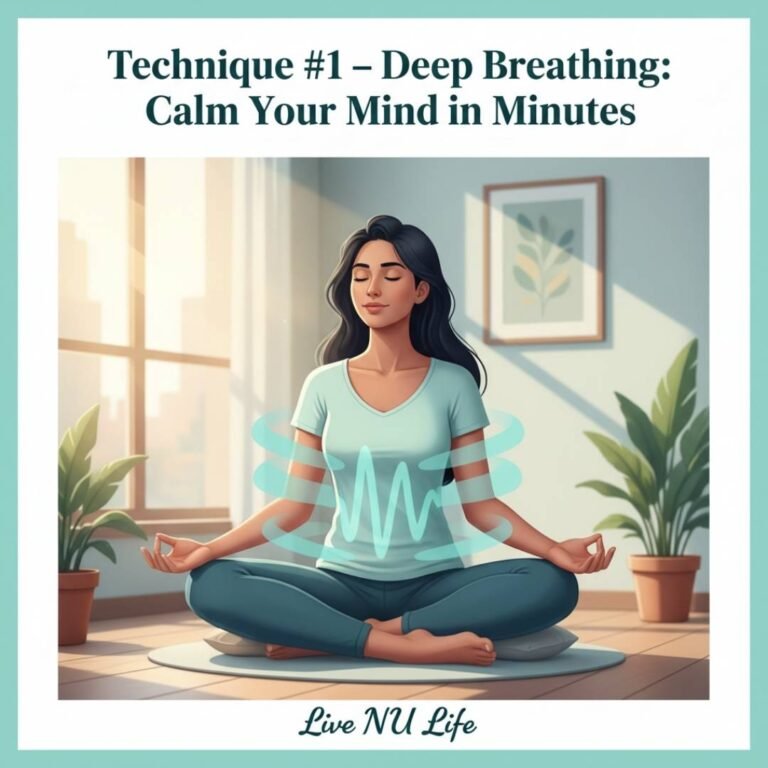
Technique #1 – Deep Breathing: Calm Your Mind in Minutes
First, forget old advice. This is not about fancy meditation. Just deep breathing. Do it when mind looks busy, heart pounding, or stomach tight (like before interview or after bad news). You want to reset yourself. It work quick. Use this when you feel stress or need calm (type deep breathing for anxiety/stress relief/calm in Google for support). No special prep needed. Just your breath.
How to Do Deep Breathing
- Find Your Spot
Sit, or stand. Keep your spine straight, shoulders down (like when standing tall). Hands loose by side or on lap. Feet flat on ground.
- Start Breathing
Breathe in through nose. Make it slow, deep—imagine pulling air down from top to belly. Fill belly (not chest). Belly move out. Count: inhale for 4 seconds (count in mind).
- Hold
After inhale, hold breath for 2 seconds (like waiting at traffic light).
- Release
Let breath out through mouth, slow (like blowing on hot soup). Belly move in. Exhale for 6 seconds. Do not force. Just let it go.
- Repeat
Do 5 to 7 rounds. If feel dizzy, stop and rest. Try again later. Calm does not come quick—sometimes you need few rounds. It is fine.
Short tip: Use this any time. It works at office, bus stop, bed, bathroom (yes, really).
Tell me your experience level, health condition, or where you want to use this (office, school, home). I can make instructions even more easy for you.
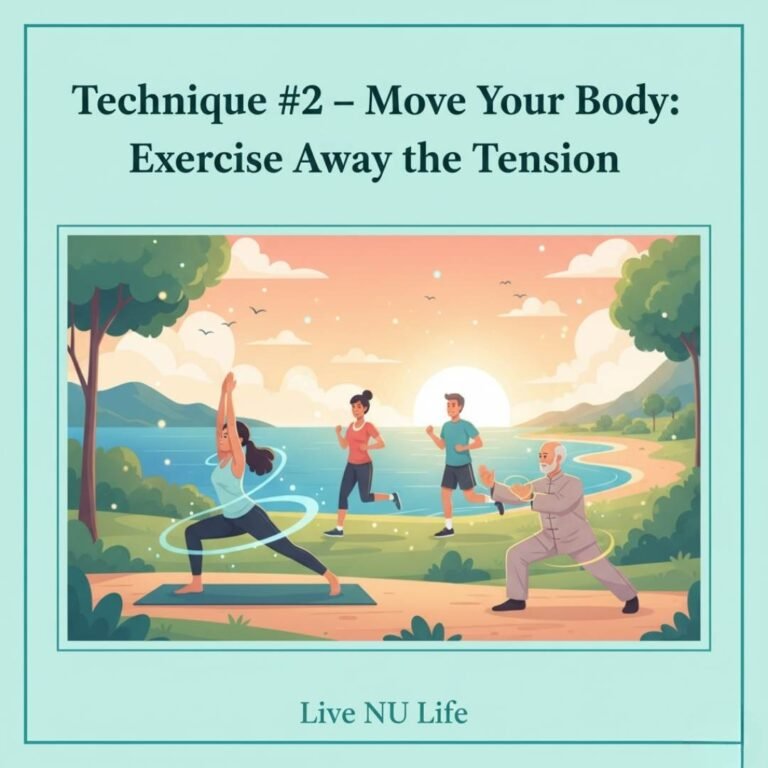
Technique #2 – Move Your Body: Exercise Away the Tension
Move your body when tension build too much. Exercise help you get out from your mind, so tension not stay all day in body. Even small movement work. You no need fancy gym or running shoes. (I do it in old slippers sometimes.) Stretch arms, walk up and down, swing legs (like child swinging on swing).
Simple Exercise Ways
- Walk around house. Not fast, not slow. Just normal step.
- Lift arms up, then drop them down. Feel heavy like rag doll.
- Swing legs forward then back. Stand and do, hold on to wall.
- Do shoulder roll. Bring shoulders up to ears, then circle to back. Drop down. Repeat six times.
- Try gentle twisting. Stand feet apart, slowly twist torso left, right. Like wringing out wet towel.
Example for Tension Relief
- Do five minute walk after heavy thinking or stress. (Like after long call or fight.)
- Stretch neck side to side before sleep. Help tension go away from head.
Now, try these next time you feel tension. (No one watching. Good for all age.)
Explore proven strategies for healthy aging in our full Anti-Aging Wellness 2025 Guide.
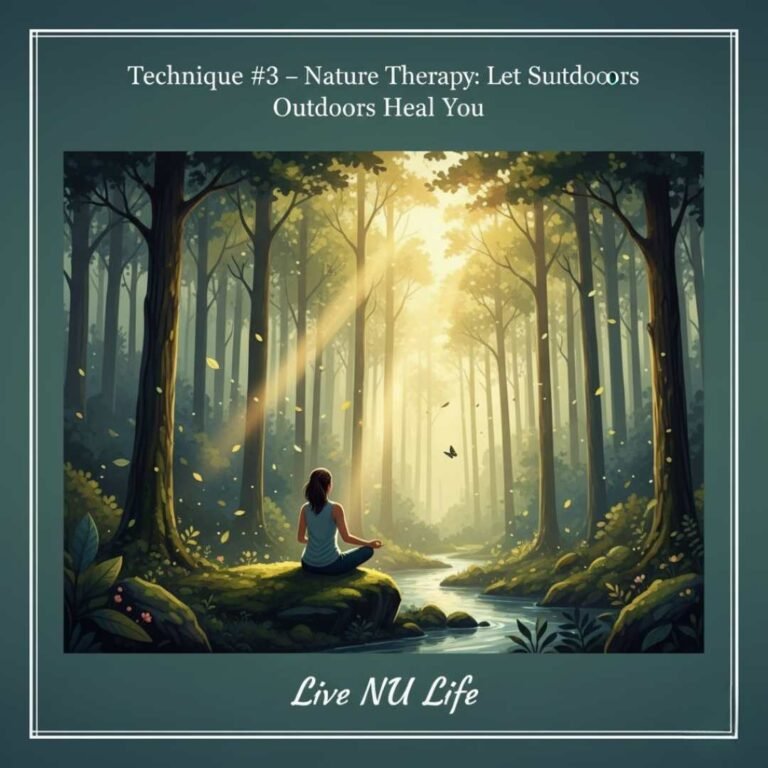
Technique #3 – Nature Therapy: Let the Outdoors Heal You
Nature has a strong power to calm the mind. When body feels heavy and thoughts too noisy, go outside. This is what I call Nature Therapy. Just being under open sky can change your inner energy (you will see the difference soon).
Step 1: Go Out and Observe
Leave your phone. Start walking slowly. Look at trees, water, or even ants on the soil. (Don’t rush it.) Let your eyes rest on green leaves.
Step 2: Breathe with the Air
Stand still and take slow breath. Imagine you are breathing the freshness of trees. When exhaling, let the stress go down like dust blown away.
Step 3: Touch and Connect
Touch bark, grass, or stone. Feel the cool or warm surface. It remind you that earth is alive too.
Step 4: End with Thanks
Before leaving, whisper thanks to nature. This small thing open your heart again.
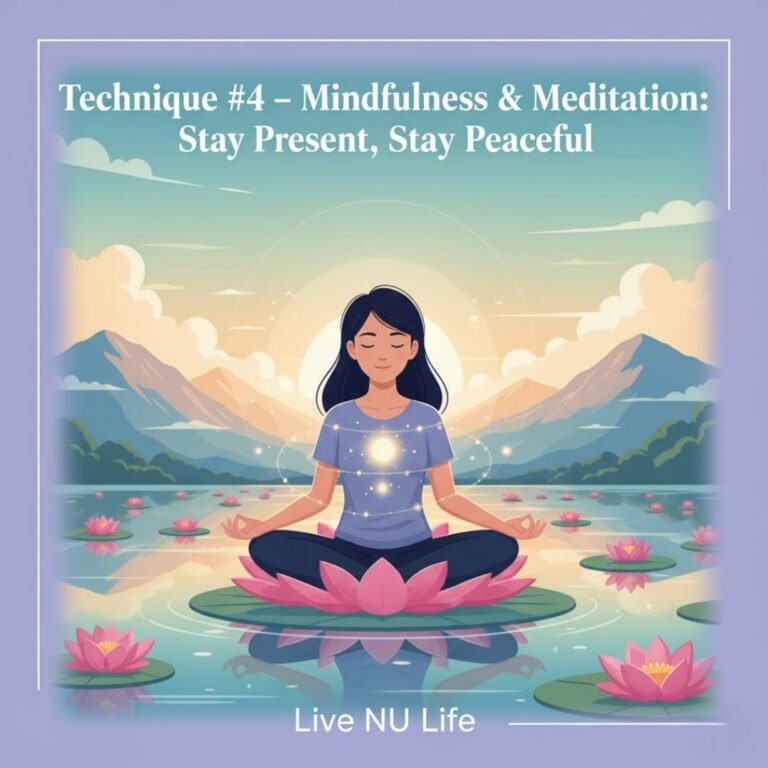
Technique #4 – Mindfulness & Meditation: Stay Present, Stay Peaceful
Many people today live with noise inside mind. Always running, always worrying. This technique help to stay present and peaceful. You don’t need fancy mat or candle (only a quiet minute). Just your breath and awareness. Like when you stop in between busy road, and suddenly notice the wind on face.
Mindfulness Practice (Simple Step)
- Sit straight but soft.
- Place hands on knees (palms up if you like).
- Close eyes and breathe normal. Don’t force it.
- Feel air go in, go out.
- When mind run away (it will), just bring it back to breath again.
- Count one to five if help you stay here.
- Stay for 5–10 minutes (set timer, so no worry).
Meditation Habit (Daily Routine)
- Try morning or before sleep time.
- Don’t expect magic. Just be.
- Small practice every day make big calm inside.
- This is how mindfulness and meditation reduce anxiety and make your day peaceful.
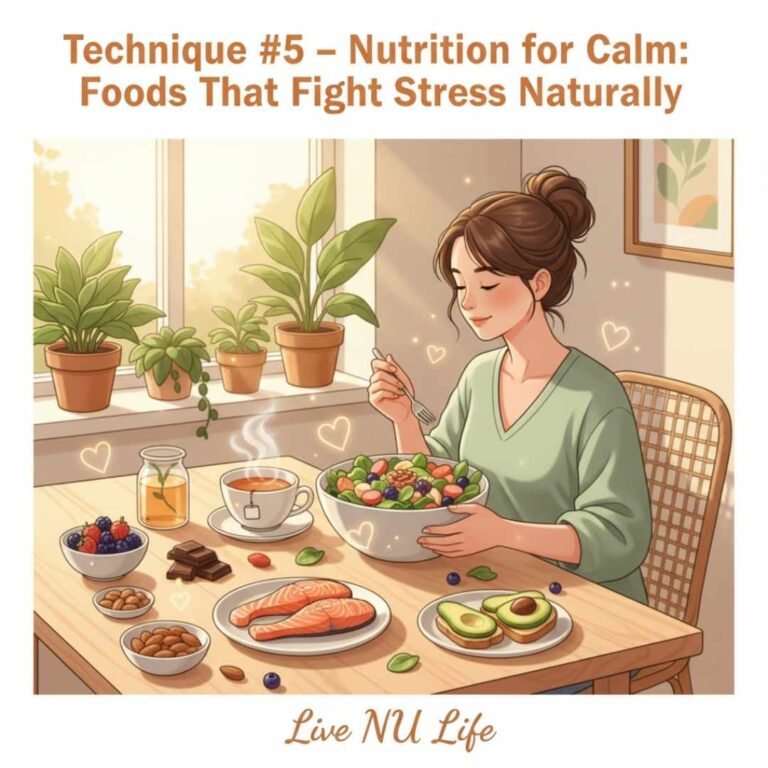
Technique #5 – Nutrition for Calm: Foods That Fight Stress Naturally
When body feel tight and mind get noisy, look at food you eat. Nutrition for calm start from daily habit, not medicine. Try to eat foods that cool down body heat and give stable energy. (Sugar and fried food make stress go higher.) Keep simple, clean diet. Feel how food change your mood, every day.
Foods That Calm Down
- Eat more green
Spinach, lettuce, and drumstick leaves work well. They give magnesium, good for nerves. Cook light, not heavy oil. - Add banana or papaya
These sweet fruits calm stomach (help if you get heart burnt when anxious). Eat slow. - Use oats and brown rice
They give slow energy so mind not jumpy. Eat in morning or lunch. - Sip warm water or herbal tea
Like chamomile or tulsi tea. Warm drink help relax chest. - Cut caffeine and alcohol
These make heart run fast. Keep weekend light.
Strengthen your health at the cellular level with insights from our Cellular Health Optimization article.
Bonus Tip – Sleep: The Most Underrated Stress-Buster
Sleep is not a luxury. It’s your body’s repair time. Most people skip it for work, phone, or late talk. But lack of deep sleep messes with mood, hormones, and stress level. You can’t drink coffee to fix that. You must rest right.
Make Sleep Your Stress Medicine
- Follow a real-time
Go to bed same time daily (even Sunday). The brain like routine. Wake up early with sunlight on face. - Keep it dark and quiet
Turn off screen light. No TV before bed. Make room cool, dark, and simple. (A fan sound helps many people.) - Eat light dinner
Heavy food before bed create acid and heart burnt. Stop eating 2 hours before sleep. - Calm the body
Do slow breathing or easy stretch. Imagine lying like a tired cat. Body drop, mind empty. - No phone scrolling
That blue light tricks your brain like it’s daytime.
Dive into our guide on 10 Daily Habits to Extend Your Healthspan in 2025 to start expanding your health-span today.
When to Seek Help: Knowing Your Limits
People often try to handle things alone. But sometimes body give signs. Pain stay long, breathing get tight, or sleep stop coming. This is not small thing. Knowing when to seek help is part of real healing. Do not wait until it become too heavy.
When Pain Doesn’t Go Away
Keep note of pain that last more than few days. If it move or get sharper (like burning from inside), go to doctor. Chronic pain is body calling for attention.
When Mind Feels Too Heavy
If you wake tired, lose interest in things you liked, or feel like crying for no clear reason, talk to someone. A friend first, then a counselor. Don’t keep it locked inside.
When Breath or Heart Feels Strange
Short breath, tight chest, or heart beating too fast even when resting — seek help soon. These are not stress only (sometimes it is warning sign).
Discover top science-backed options for optimal aging in our Best Longevity Supplements: Evidence-Based Guide.
Final Thoughts – Small Steps, Big Relief
Take small steps every day. Don’t rush to fix everything at once (mind gets tired fast). Start with breathing slow, shoulders down. Feel how chest opens. Then walk a little, maybe under trees or near water. This kind of moment give peace more than you think.
Now make small moves for big relief. Drink warm water when stress come (it calm your body). Stretch arms up like holding the sky. Smile to yourself even if mood heavy. Do this again tomorrow. Small step become habit, and habit become your healing way.
Explore advanced strategies with Science-Based Longevity Protocols for Optimal Aging and take your wellness further.
FAQs
- Sit straight but relaxed.
- Inhale through the nose (count 4 slowly).
- Hold breath for 2 seconds.
- Exhale through mouth (count 6).
- Do this 5 times. It calm the heart rate.
- Yes, walk daily 20 minutes.
- Choose green place (park or ground).
- Focus on steps and rhythm.
- Feel the air move across your skin.
- It clear the mental fog.
- Avoid too much caffeine or sugar.
- Eat warm meals with veggies.
- Drink water often (body dry make you irritated).
- Keep meal time fixed.
- Yes, very important.
- Go to bed same time daily.
- Keep phone away (screen light confuse brain).
- Try slow breathing before sleep.
- Close eyes and listen natural sound (birds or rain videos also okay).
- Rub both palms and cover eyes (like warm cover).
- Try small gratitude list before bed—three things good in your day.
References
Bentley, T. G. K., D’Angelo, C., Ameen, S. E., Benchimol, M., De Jager, A. C., & Girling, I. (2023). Breathing practices for stress and anxiety reduction: Conceptual framework of implementation and evidence review. Frontiers in Psychology, 14, 1090487. https://doi.org/10.3389/fpsyg.2023.1090487
Can, Y. S., Chalabianloo, N., Ekiz, D., & Ersoy, C. (2019). Continuous stress detection using wearable sensors in real life: Algorithmic programming contest case study. Sensors, 19(8), 1849. https://doi.org/10.3390/s19081849
Childs, E., & de Wit, H. (2014). Regular exercise is associated with emotional resilience to acute stress in healthy adults. Psychoneuroendocrinology, 39, 211-219. https://doi.org/10.1016/j.psyneuen.2013.09.017
Corliss, J. (2022, February 1). Six relaxation techniques to reduce stress. Harvard Health Publishing. https://www.health.harvard.edu/mind-and-mood/six-relaxation-techniques-to-reduce-stress
Fincham, G. W., Strauss, C., Montero-Marin, J., & Cavanagh, K. (2023). Effect of breathwork on stress and mental health: A meta-analysis of randomised-controlled trials. Scientific Reports, 13(1), 432. https://doi.org/10.1038/s41598-022-27247-y
Hodge, A., Carpenter, R., Edwards, M., Parker, G., Wilson, J., & Murphy, M. (2021). Mindfulness is associated with lower stress and higher work engagement in a large sample of MOOC participants. Frontiers in Psychology, 12, 724126. https://doi.org/10.3389/fpsyg.2021.724126
Hyun, S., Kim, S., Jang, S., Jung, I., & Son, Y. (2018). Effects of forest environment (Shinrin-yoku/Forest bathing) on health promotion and disease prevention – A systematic review. International Journal of Environmental Research and Public Health, 15(7), 1524. https://doi.org/10.3390/ijerph15071524
Ma, X., Yue, Z. Q., Gong, Z. Q., Zhang, H., Duan, N. Y., Shi, Y. T., Wei, G. X., & Li, Y. F. (2017). The effect of diaphragmatic breathing on attention, negative affect and stress in healthy adults. Frontiers in Psychology, 8, 874. https://doi.org/10.3389/fpsyg.2017.00874
Norelli, S. K., Long, A., Krepps, J. M., & Rubio, M. R. (2023). Relaxation techniques. In StatPearls [Internet]. StatPearls Publishing. https://www.ncbi.nlm.nih.gov/books/NBK513238/
Nowacka-Chmielewska, M., Grabowska, K., Grabowski, M., Meybohm, P., Burek, M., & Małecki, A. (2022). Running from stress: Neurobiological mechanisms of exercise-induced stress resilience. International Journal of Molecular Sciences, 23(21), 13348. https://doi.org/10.3390/ijms232113348
Queirolo, L., Fazia, T., Roccon, A., Pistollato, E., Gatti, L., Bernardinelli, L., Zanette, G., & Berrino, F. (2024). Effects of forest bathing (Shinrin-yoku) in stressed people: A pilot study. Frontiers in Psychology, 15, 1458418. https://doi.org/10.3389/fpsyg.2024.1458418
Rogerson, O., Soltani, S., Copeland, E., Hinze, V., & Dymond, S. (2024). Effectiveness of stress management interventions to change cortisol levels: A systematic review and meta-analysis. Psychoneuroendocrinology, 159, 106421. https://doi.org/10.1016/j.psyneuen.2023.106421
Tavoian, D., Craighead, D. H., & Alexander, L. M. (2023). Deep breathing exercise at work: Potential applications and strategies. Frontiers in Physiology, 14, 1040091. https://doi.org/10.3389/fphys.2023.1040091
Zhang, J., Xiang, S., Li, X., Tang, Y., & Hu, Q. (2024). The impact of stress on sleep quality: A mediation analysis based on longitudinal data. Frontiers in Psychology, 15, 1431234. https://doi.org/10.3389/fpsyg.2024.1431234
Zięba, M., Brudkiewicz, M., Sanak, T., Gozdowski, D., & Postupolski, J. (2018). Effect of increase in cortisol level due to stress in healthy young individuals on dynamic and static balance scores. Northern Clinics of Istanbul, 5(4), 295-301. https://doi.org/10.14744/nci.2017.73749

